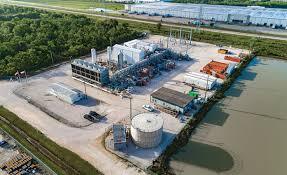DFC’s approved financing includes a new loan of up to $292 million to finance the development and upgrade of the power plant’s infrastructure and promote electricity reliability and access throughout Sierra Leone. Sierra Leone’s power capacity estimates at 150-MW with approximately 27.5% of the total population and about 4.9% of the rural population currently having access to electricity.
DFC’s financing also includes approximately $120 million in political risk insurance to bring in private investment to the project, which would be the first utility-scale, independent power project in Sierra Leone.
“DFC is proud to support the country’s first large utility-scale, independent power project and lay the foundation for reliable and affordable electricity in Sierra Leone,” said Nisha Biswal, Deputy Chief Executive Officer at DFC.
Kenya-based Milele Energy owns a 50.1% stake in the project while Middle East-focused turnkey power developer TCQ Power, with a 49.9% share, provides equity for the project. Mumbai, India-based Shapoorji Pallonji has been picked as construction contractor.
Siemens Energy will supply gas and steam turbine equipment as well as long-term servicing, and operation and maintenance.
The project will sell all the electricity generated from the plant to Electricity Distribution and Supply Authority (EDSA), the state agency responsible for the distribution and supply of electricity in Sierra Leone, under a 20-year power purchase agreement.
Read also: Agreement signed for Sierra Leone’s US$ 1.5bn Freetown-Lungi airport bridge
Read also: Guinea inaugurates Coyah-Sierra Leone border road project

Phase one of the Sierra Leone’s 126-MW Power Generation Project
Phase one of the project will generate 83.5 MW with two GE LM2500 turbines in combined cycle with a steam turbine.
The project doesn’t stop after the initial phase. For the second phase, the developers have ambitious plans to further increase the total generating capacity by a substantial 43 megawatts. This additional power will come from the construction of a whole new combined cycle power plant – the second of its kind for this project.
However, simply building another power plant won’t be enough. The contractors will have some critical infrastructure work to carry out as well. Existing substations in the area, which may be aging or insufficient for the increased electricity loads, will require upgrades and modernization to handle the power from the new plants.
Arguably an even more daunting task lies in expanding the transmission network. New high-voltage transmission lines will need to be constructed to integrate the output from these power plants into Sierra Leone’s existing electric grid. Stringing those lines over long distances and connecting them to the grid system is a complicated engineering endeavor in itself.
So while adding 43 more megawatts of generation is the headliner for phase two, the supporting work on substations and transmission is just as vital. It underscores the enormity of this project and the mission to drastically overhaul Sierra Leone’s electricity infrastructure from the ground up. The contractor’s role extends far beyond just the power plants themselves.
Read also: Côte d’Ivoire-Liberia-Sierra Leone-Guinea (CLSG) electricity network project

